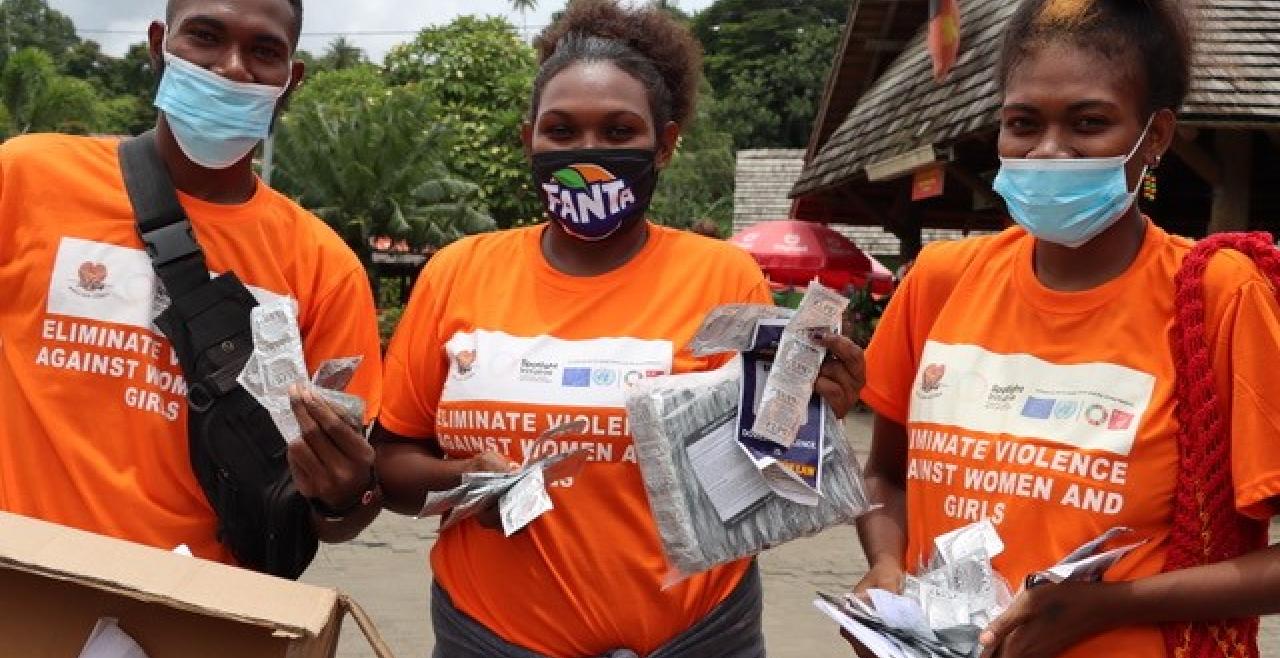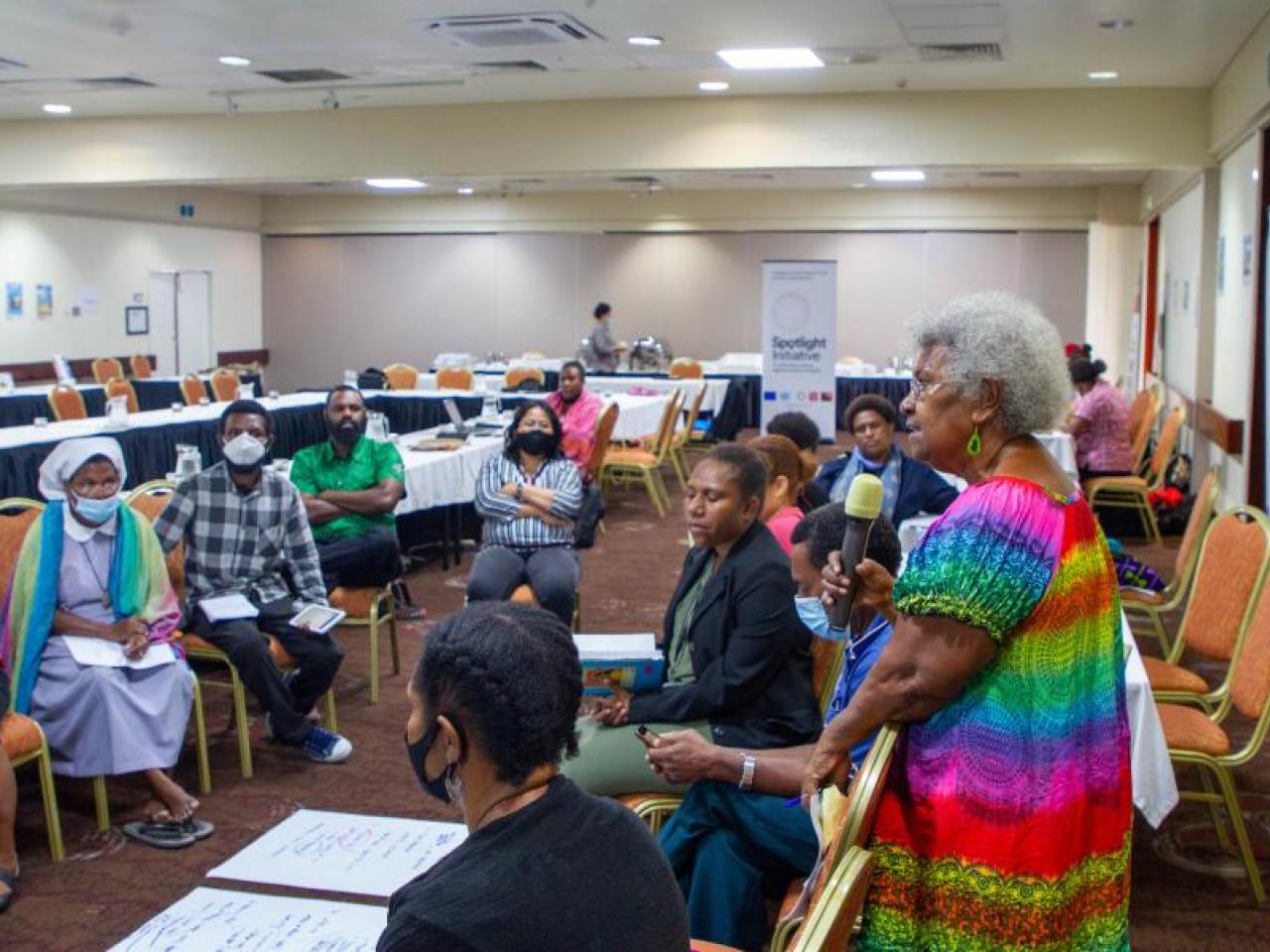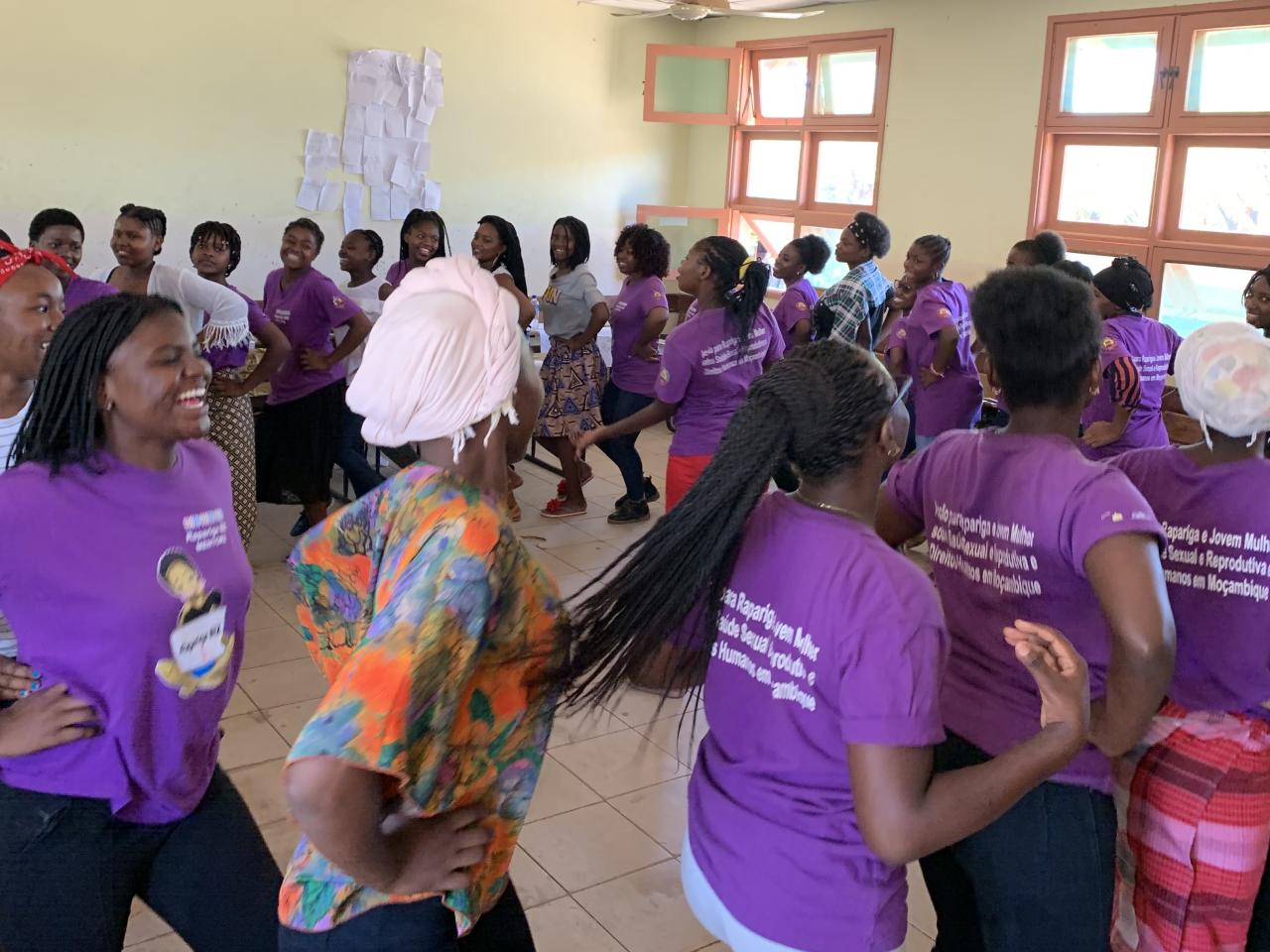From sexual health to online bullying, peer educators help girls navigate adolescence in Papua New Guinea

EAST NEW BRITAIN, Papua New Guinea - “I would say most, more than 60 per cent, of the survivors of gender-based violence that we see in the clinic are young adults,” says Primrose, Youth Coordinator for the Family Health Association (FHA) in East New Britain.
She has just stepped off stage after delivering a presentation to senior students of Kokopo Secondary School as part of FHA’s school outreach programme. Primrose told students that they can reach out to the FHA if they need help and that violence is never the survivor’s fault. Empowering youth to report violence is one of the FHA's main objectives.
WATCH: Peer educators are critical to reaching young people with information on sexual health and non-violent relationships.
According the national Demographic and Health Survey (2016-2018), 59 per cent of women and girls aged 15-49 in Papua New Guinea have experienced physical and/or sexual violence - almost twice the global average.
Primrose and her team of FHA peer educators hope to end this trend by doing outreach to schools and communities across East New Britain. Her team started with 20 peer educators but over the course of the pandemic, that number has dropped to 10. She is now looking to recruit new educators who can join her in promoting the health services on offer at the Family Health Association; providing information on healthy, non-violent relationships; and sharing information on sexual and reproductive health.
“We do clinical outreach and we also do community outreach,” she says. “We focus on family planning and especially preventing unwanted pregnancies so young girls are able to complete their education.”
"There were no teachers that really understood [cyberbullying] because they were older.” - Margaret, senior school student
Speaking the same language
“We believe that it’s very important to ensure that young people realize that violence against anyone, whether it’s in a relationship or between any other young people, is not okay,” said FHA Director Michael Salini. “We need to get that message across to them. So that’s why we engage these young people to do it on behalf of the organization. Young people talking to young people is the most effective way of changing perceptions and values in communities.”
“When peer educators speak to young people, it’s like we’re speaking the same language,” says Primrose. “We’re in the same peer groups and we’re better able to get that message across.”
The programme has significant support from students who confess information from adults often fails to recognize the experiences of young people.
“I, personally, had gone through that kind of experience with cyber-harassment,” shared Margaret, a senior student from Kokopo Secondary School. “I can testify that at that time, there were no teachers that really understood that because they were older.”
According to UNICEF, one in three young people in 30 countries said they have been a victim of online bullying, with one in five reporting having skipped school due to cyberbullying and violence.
“So, I think cyber-harassment is one of the issues that older people have a hard time understanding," says Margaret. "If a young person stands up and speaks to young people in a way that they understand, people will pay attention.”
Following the school outreach session, the team from FHA moved to Kokopo markets where volunteers distributed pamphlets and condoms, part of their wider clinical outreach programme to educate the public on sexual and reproductive health, and the prevention of sexually transmitted infections.
The Spotlight Initiative is supporting the Family Health Association in East New Britain to conduct youth outreach activities that promote positive relationships and connect young people to sexual and reproductive health services.
By Rachel Donovan


